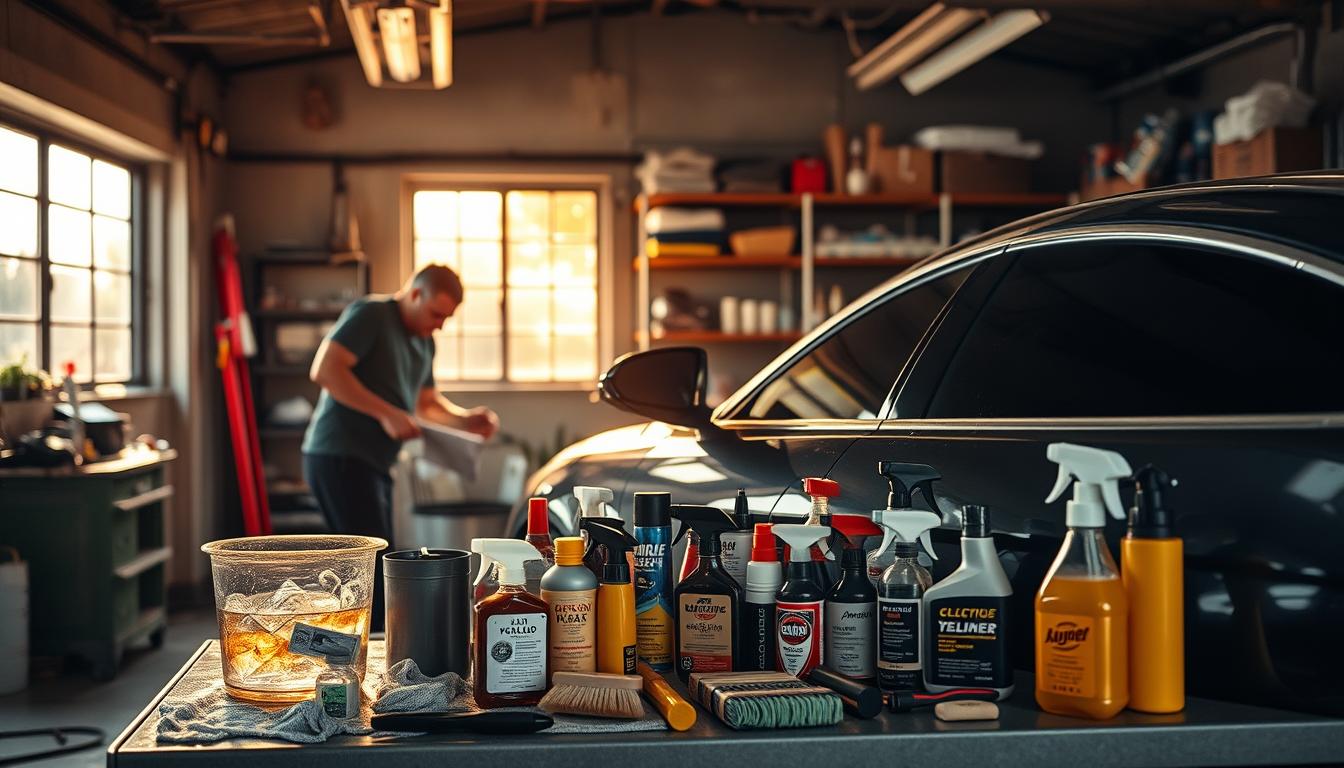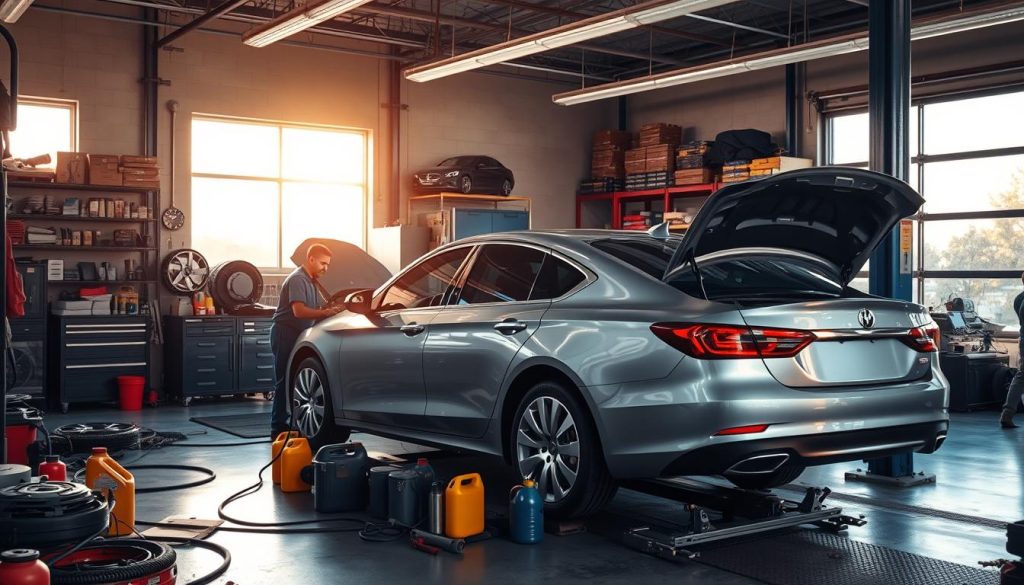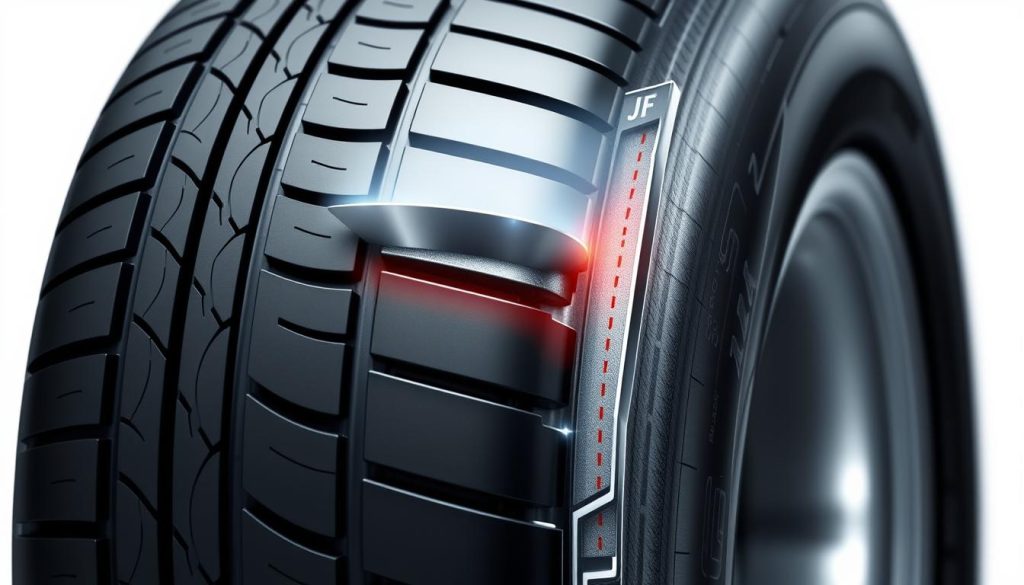DIY car detailing is a fun way to keep your car looking new. It makes your car look better and drives better. By spending a little time, your car stays clean and in good shape.
Detailing your car once a year makes a big difference. Use a special glass cleaner to keep the inside clean and windows clear. A microfiber cloth is great for cleaning and won’t scratch your car.
Detailing is not just about looks. It also helps avoid expensive repairs later. Using tire protectant keeps tires looking good and lasts longer. When washing your car, clean it in sections to avoid marks.
Detailing keeps your car’s inside clean too. Vacuuming weekly keeps dirt away and prevents damage. With the right tools, you can handle small repairs and keep your car in top shape.
Key Takeaways
- Detailing once a year enhances appearance and experience.
- Investing in car cleaning kits provides cost-effective solutions.
- Ammonia-free glass cleaner is ideal for interior surfaces.
- Regular tire protection prolongs tire lifespan and aesthetics.
- Using a microfiber cloth prevents scratches during detailing.
- Consistent interior vacuuming protects against long-term damage.
Understanding the Basics of Auto Repair Financing
Auto repairs can surprise us, causing stress. Auto repair financing helps. It lets us understand our options for car repair loans.
What is Auto Repair Financing?
Auto repair financing means borrowing money for car repairs. You can get personal loans, use credit cards, or try payday and title loans. Each has good and bad sides, based on your money situation and repair needs.
Benefits of Auto Repair Financing
Auto repair financing has many benefits:
- Immediate access to money for urgent repairs.
- Flexible payment plans to spread out big costs.
- Lower interest rates than some loans, like payday loans.
- Pre-qualification checks that don’t hurt your credit score.
Different Types of Financing Options
There are many financing options for auto repairs. Each meets different needs. Here are some common ones:
- Personal Loans: Good for big amounts, with long repayment periods. Rates depend on your credit score.
- Credit Cards: Convenient but beware of high-interest rates. A $1,000 repair with 15% APR takes 56 months to pay off.
- Title Loans: Use your car title as collateral, with APRs around 300%. Many struggle, leading to rollovers and repossession.
- Buy-Now-Pay-Later Options: No upfront costs, with fees that vary. They can be a good choice, depending on the provider.
Preparing for Auto Repairs Financially
Knowing how much auto repairs cost is key to keeping our cars in good shape. We need to decide what repairs are really needed. This helps us plan better. Also, checking warranty options can help avoid big surprise costs.
Having an emergency fund is also important. It helps us deal with repair costs without needing loans.
Assessing the Need for Repairs
It’s important to think carefully before fixing our cars. A 2017 AAA survey found repairs can cost between $500 and $600. Small fixes like a cracked windshield or a dented bumper can add up fast.
By choosing the right repairs, we can save money. This way, we make our cars last longer without spending too much.
Reviewing Warranty Options
Warranties can really help with repair costs. They cover some repairs, which can save us money. Knowing what our warranty covers can prevent us from needing loans for covered repairs.
Looking closely at our warranties can reveal savings we might not have seen.
Building an Emergency Fund
Having an emergency fund is a smart move for car repairs. Experts say to save $50 to $100 each month for unexpected repairs. This fund helps us avoid loans for sudden problems like a dead battery or worn-out brake pads.
Financing Options for Auto Repairs
Finding the right financing for auto repairs can help a lot. There are many options, each with its own good and bad points.
Personal Loans for Car Repairs
Personal loans are a popular choice for car repair costs. They can be from $1,000 to $50,000. The interest rates are usually between 6% and 36%.
These loans let us set a fixed payment plan. This helps us budget better. Car repairs can cost a lot, like over $800 for a new alternator or more than $1,000 for a fuel pump.
If we have good credit, we can get lower interest rates. This makes it easier to manage our payments.
Using Credit Cards Wisely
Credit cards can give us quick cash for repairs. But we need to be careful. Zero-interest cards offer a chance to avoid interest for 15 to 21 months if we pay on time.
Using cards like the Synchrony Car Care™ credit card can help finance purchases over $199. They offer promotional deals with no annual fees and no fraud liability. But, missing payments can lead to high penalty rates, up to 39.99%.
It’s important to use credit cards wisely to avoid debt.
Short-Term Loans: Payday and Title Loans
Short-term loans, like payday and title loans, give quick cash. But, they have very high interest rates. They might seem good for urgent repairs but can be risky.
Missing payments can lead to extra fees. This can hurt our finances. If we need money fast, think carefully about the long-term effects of these loans.
Making the Most of Our Repair Budget
We need to plan smartly to use our repair budget well. Getting quotes from many mechanics helps us find the best prices. This way, we can choose repairs that are affordable but don’t cut corners.
Looking into financing options can also help with big repair costs. This way, we can manage our money better.
Seeking Quotes from Multiple Mechanics
Getting quotes from different shops is key to knowing repair costs. Mechanics might charge differently for the same job. This lets us negotiate better.
Talking openly about our budget helps find solutions that fit our money. By comparing quotes, we avoid spending too much. This way, we find repairs that are both affordable and good quality.
Utilizing Payment Plans
Many shops offer payment plans to help with costs. These plans let us pay in smaller bits. This is great for unexpected big bills.
But, some plans might have interest. So, it’s important to read the fine print. Car repair loans can also help with big expenses. They let us keep our cars in good shape.
Considering DIY Options
For small fixes, DIY can save a lot of money. Simple jobs like oil changes or tire rotations are easy to do ourselves. Online guides help us do these tasks well.
Doing these jobs ourselves not only saves cash. It also teaches us about car care. This way, we can fix small problems ourselves, not always needing a mechanic.
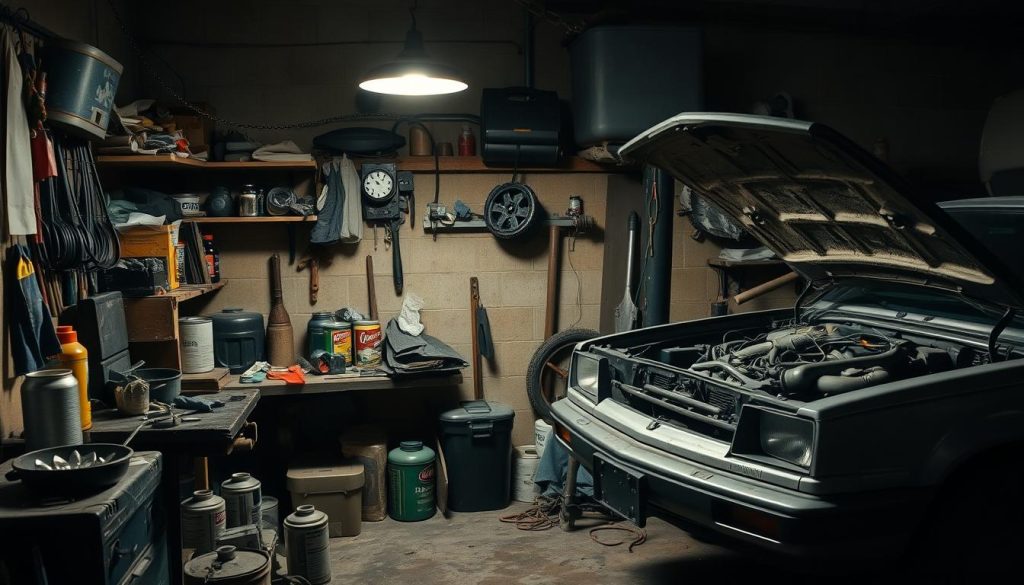
Managing Repayment and Avoiding Debt
Getting loans or credit for car repairs is a big step. We must manage our repayments well to avoid debt. This keeps our finances stable and our credit score high.
Setting a Repayment Schedule
Creating a good repayment plan is key. It helps us use our money wisely each month. Keeping our credit use under 25 to 30 percent is important for our score.
Car repair loans have terms from a few months to years. Choosing a plan that matches our budget helps avoid extra interest.
Avoiding Common Pitfalls
We must watch out for traps that can mess up our payments. Using high-interest payday loans or maxing out credit cards is risky. These can make our total costs much higher.
High-interest credit cards can have rates over 20 percent. It’s smart to find fair prices before fixing things. Paying at least the minimum on time is vital. Late or missed payments can hurt our credit score a lot.
Exploring Alternatives to High-Interest Loans
Looking for better loan options can save us money. Personal loans or credit union deals might be cheaper than regular loans. A 0 percent APR offer can help us avoid interest.
Borrowing from family or friends might have flexible terms. This can ease our financial stress. Keeping an eye on our credit score helps us see how we’re doing and make changes if needed.
Maintaining Our Vehicles to Reduce Future Costs
Regular maintenance lowers our car costs over time. It helps avoid big repairs and breakdowns. By doing important maintenance, our cars last longer and cost less to fix.
Importance of Regular Maintenance
Keeping our cars in good shape is key. Following the recommended maintenance, like changing air filters and oil, saves money. A well-kept car also uses less fuel, saving us money on gas.
Establishing a Maintenance Schedule
Having a maintenance plan is important. It helps us keep up with our car’s needs. Checking tire pressure monthly and rotating tires saves money and extends their life.
Prioritizing Repairs Based on Urgency
Choosing which repairs to do first is smart. Focus on important parts like brakes and tires. This way, we spend our money wisely and avoid using too much auto repair financing.
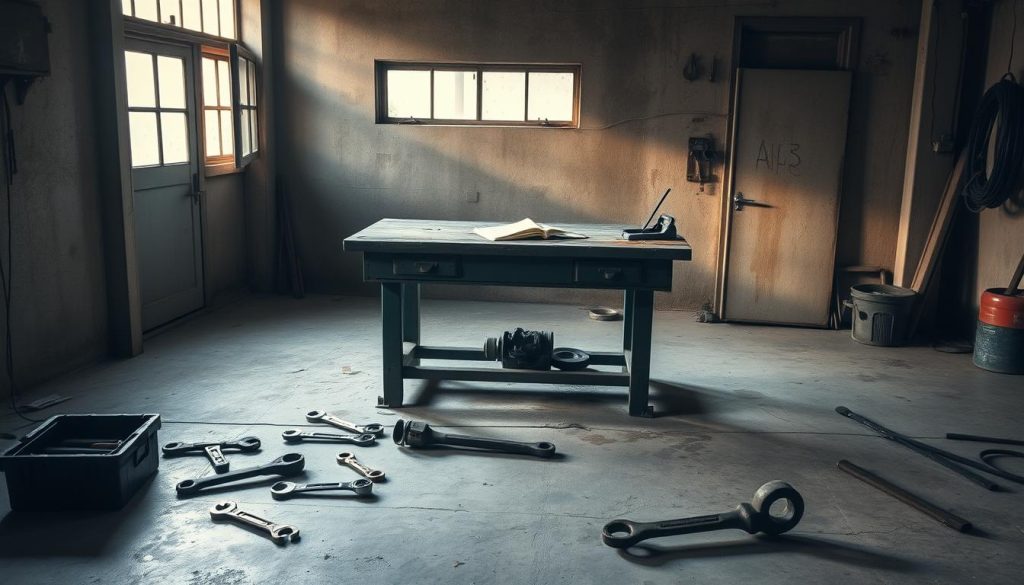
Conclusion and Call to Action
Understanding auto repair financing is key for car owners. It helps us deal with unexpected repairs. Knowing our options, like budget repairs or loans, makes managing costs easier.
Reviewing All Financial Options
When planning for repairs, knowing our financial choices is important. This includes loans, credit cards, and emergency funds. It helps us make smart decisions and avoid too much debt.
Contacting Heaven Automotive for Assistance
If you need help with repairs or financing, contact Heaven Automotive. They are at 6645 Poss Rd, San Antonio, TX. Their team offers personalized help to fit your needs and budget.
Planning for Future Repairs
Planning ahead for repairs saves money and keeps our cars in good shape. Regular maintenance and knowing our financing options help. This way, we can enjoy driving without worrying about repair costs.

